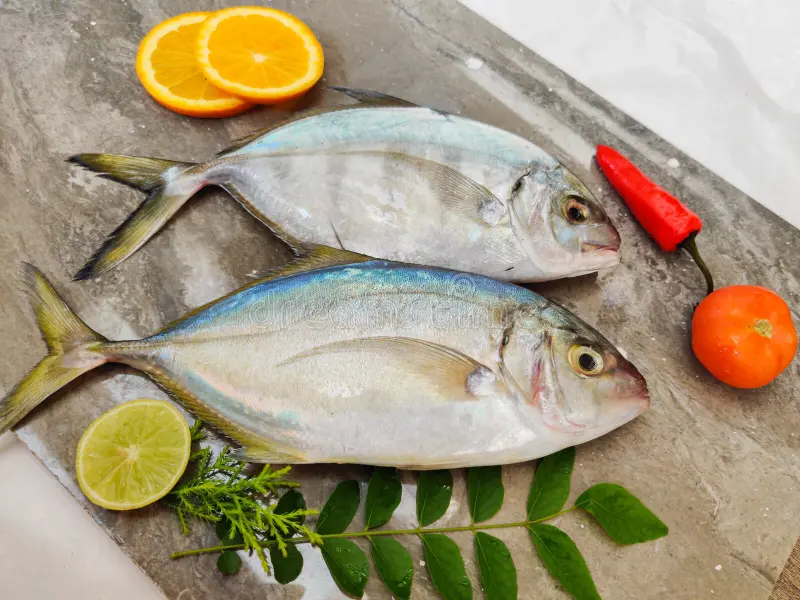Jesh fish, also known as Jesh or Jeshah, is a term used in the Arabian Gulf region to refer to a particular type of fish that is highly prized for its distinct flavor and texture. This fish has long been part of the culinary traditions of countries like the UAE, Oman, and Saudi Arabia, and it is cherished for its versatility in cooking and its rich, tender meat. In this article, we will explore what Jesh fish is, its culinary significance, and the cultural importance it holds in the Gulf region.
What is Jesh Fish?
Jesh fish is a local name for a species of fish commonly found in the waters of the Arabian Gulf. It is particularly well-known for its delicate flavor and firm, white flesh, which is suitable for a variety of cooking methods, including grilling, baking, and frying. While Jesh is often considered a delicacy in many Gulf households, its availability can vary depending on the fishing seasons and regional practices.
The name Jesh refers to different types of fish depending on the locality, but it is generally identified as a type of mullet or a similar species that is abundant in the Gulf. Jesh fish is often caught in coastal waters, particularly around the shores of the UAE and Oman, where it is known for thriving in the warm, nutrient-rich waters.
Culinary Significance of Jesh Fish
Jesh fish holds a special place in the cuisine of the Arabian Gulf. Its delicate flavor, which is not too overpowering, makes it a versatile ingredient in various dishes. The fish is typically prepared in traditional ways, but modern chefs also experiment with new methods of cooking it to elevate its natural taste.
Some of the most common dishes featuring Jesh fish include:
- Grilled Jesh: The fish is marinated with a blend of local spices such as turmeric, garlic, lemon, and olive oil, then grilled to perfection. This method of cooking brings out the fish’s natural sweetness and creates a crispy outer layer while keeping the meat tender and juicy inside.
- Jesh Machboos: Machboos, a popular rice dish in the Gulf region, is often made with Jesh fish. The fish is cooked with seasoned rice, vegetables, and a mix of aromatic spices, creating a flavorful one-pot dish. Jesh fish adds a distinctive richness to the dish, complementing the spices and the rice.
- Fried Jesh: Frying Jesh fish is another popular way to prepare it. The fish is seasoned, dipped in a light batter or flour, and deep-fried until golden and crispy. Fried Jesh is often served with a side of salad, pickles, and flatbread, making it a delicious meal that can be enjoyed during both casual meals and festive occasions.
- Jesh with Rice and Vegetables: Another traditional way to serve Jesh is by pairing it with steamed rice and sautéed vegetables. The mild flavor of the fish pairs beautifully with the aromatic rice and the freshness of vegetables like tomatoes, onions, and bell peppers.
Health Benefits of Jesh Fish
In addition to its delicious taste, Jesh fish offers several health benefits. Like many other fish varieties, Jesh is rich in high-quality protein and low in fat, making it an excellent choice for those looking to maintain a healthy diet. Fish is also a great source of essential vitamins and minerals, including omega-3 fatty acids, which are known to support heart health and improve brain function.
Jesh fish is also high in calcium and phosphorus, which contribute to maintaining strong bones and teeth. The fish’s lean meat is perfect for individuals looking to consume a healthy, nutrient-dense food that supports overall well-being.
Cultural Importance of Jesh Fish in the Gulf Region
Jesh fish holds cultural significance in the Gulf region, not only as a food item but also as part of the traditional fishing practices that have been passed down through generations. Fishing is an important aspect of Gulf heritage, particularly in coastal communities where fishing has been a primary source of livelihood for centuries.
For many people in the region, catching Jesh fish is not only a practical activity but also a bonding experience that brings families and communities together. It is common to find fishing as a social activity, with people coming together to fish for Jesh and other local fish species. In the past, families would often prepare large feasts to celebrate a successful catch, and Jesh fish would feature prominently in these gatherings.
During festive occasions, particularly during major Islamic holidays like Eid, Jesh fish is often part of the celebratory meals. Families and friends gather to enjoy this delicacy, reflecting the importance of food in nurturing social connections and fostering a sense of community.
Where to Find Jesh Fish
Jesh fish can typically be found at local fish markets throughout the Gulf region, especially in coastal areas where the fish is caught fresh from the sea. It is a popular choice for both local consumers and restaurants that specialize in traditional Gulf cuisine.
In addition to local markets, Jesh is often available in restaurants that focus on seafood dishes. The fish is prepared using traditional recipes, and it is not uncommon for restaurants to offer Jesh as part of a special seasonal menu during the peak fishing seasons.
Conclusion
Jesh fish is more than just a food item; it is a symbol of the rich culinary traditions and cultural heritage of the Arabian Gulf. Whether grilled, fried, or served as part of a flavorful rice dish, Jesh continues to be a cherished delicacy in the region, appreciated for its tender meat and mild flavor. The importance of Jesh fish extends beyond its role in the kitchen, serving as a reminder of the deep connection between the Gulf people and the sea, as well as the vital role that fishing plays in sustaining both communities and cultures.


